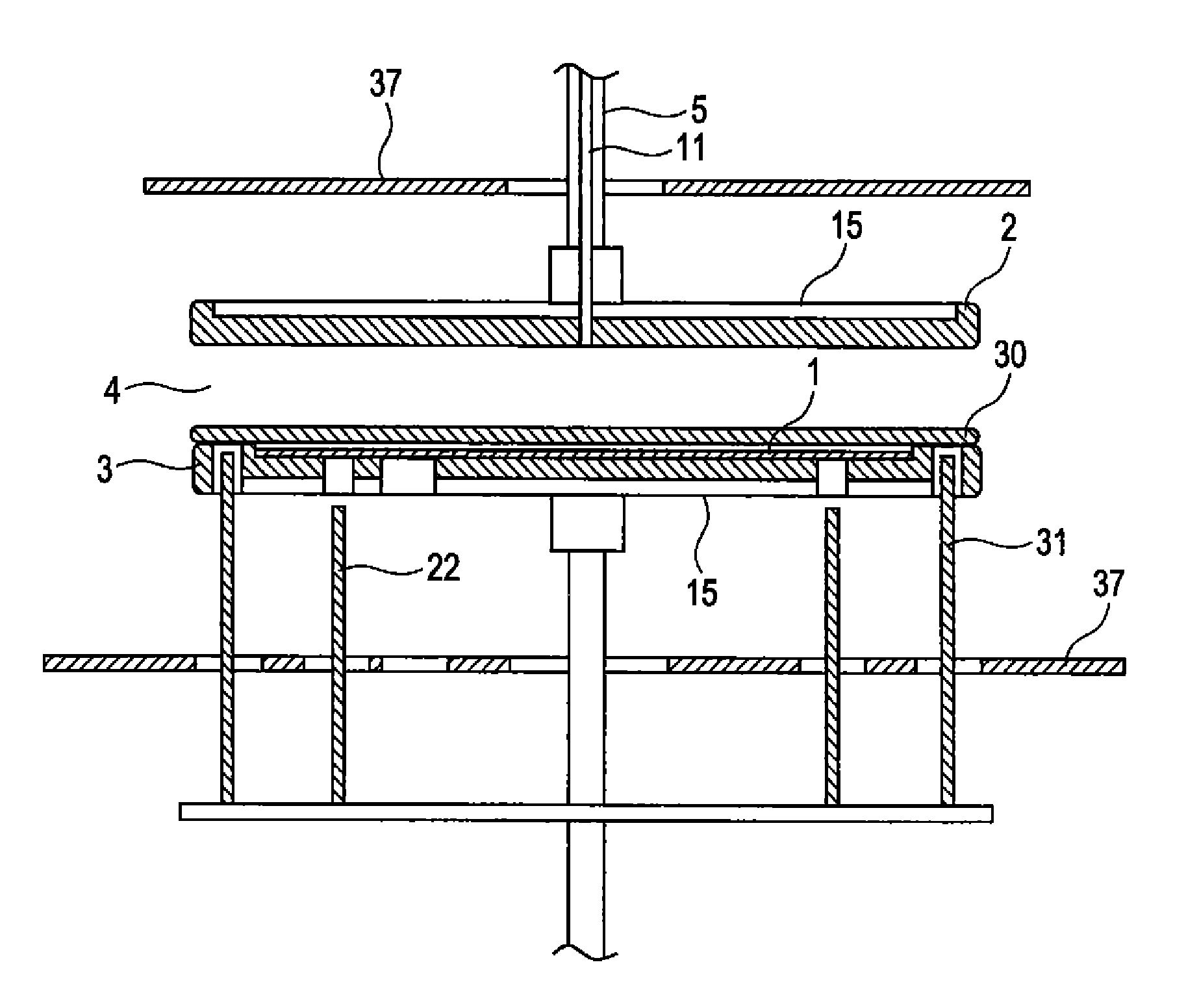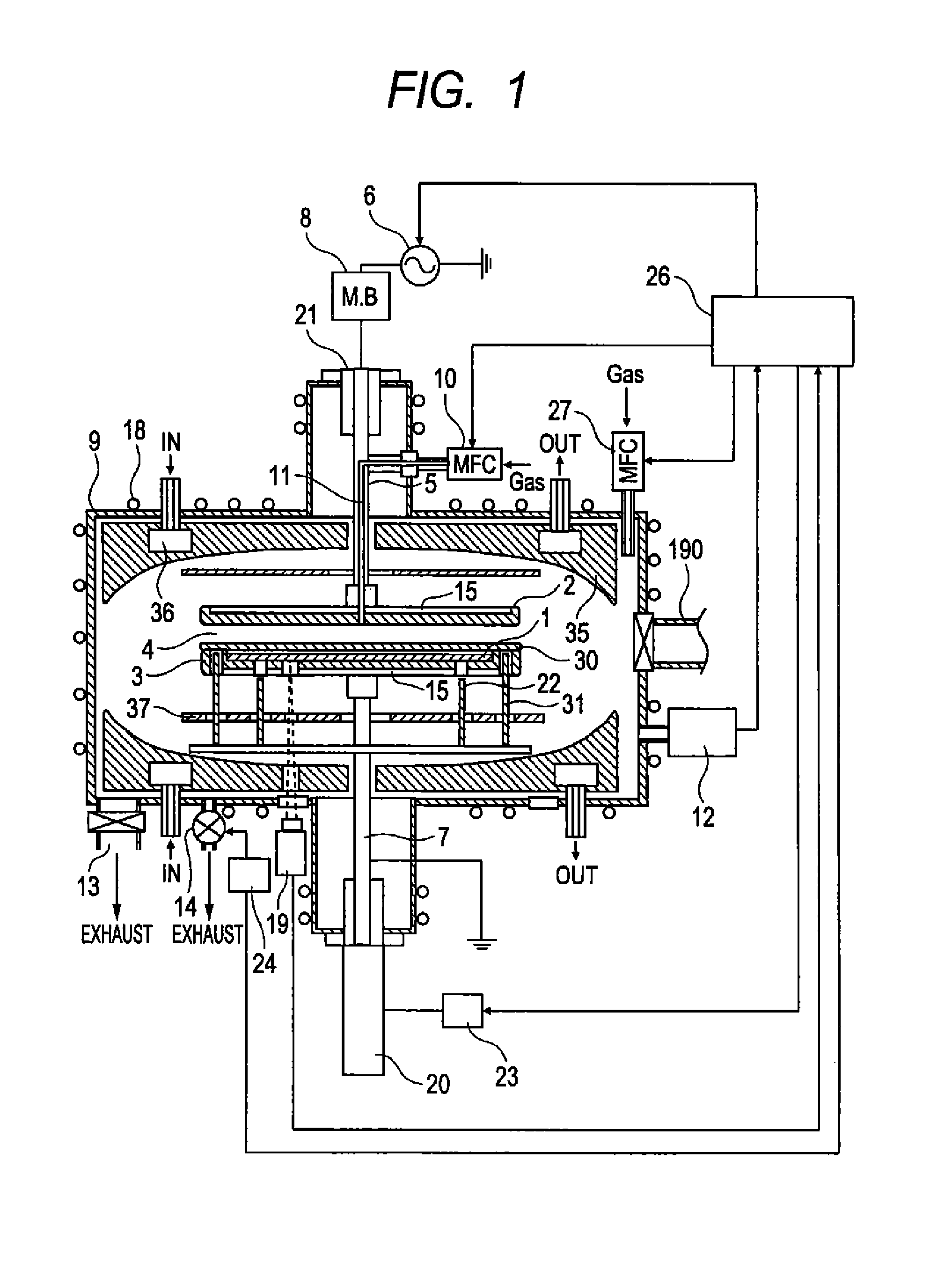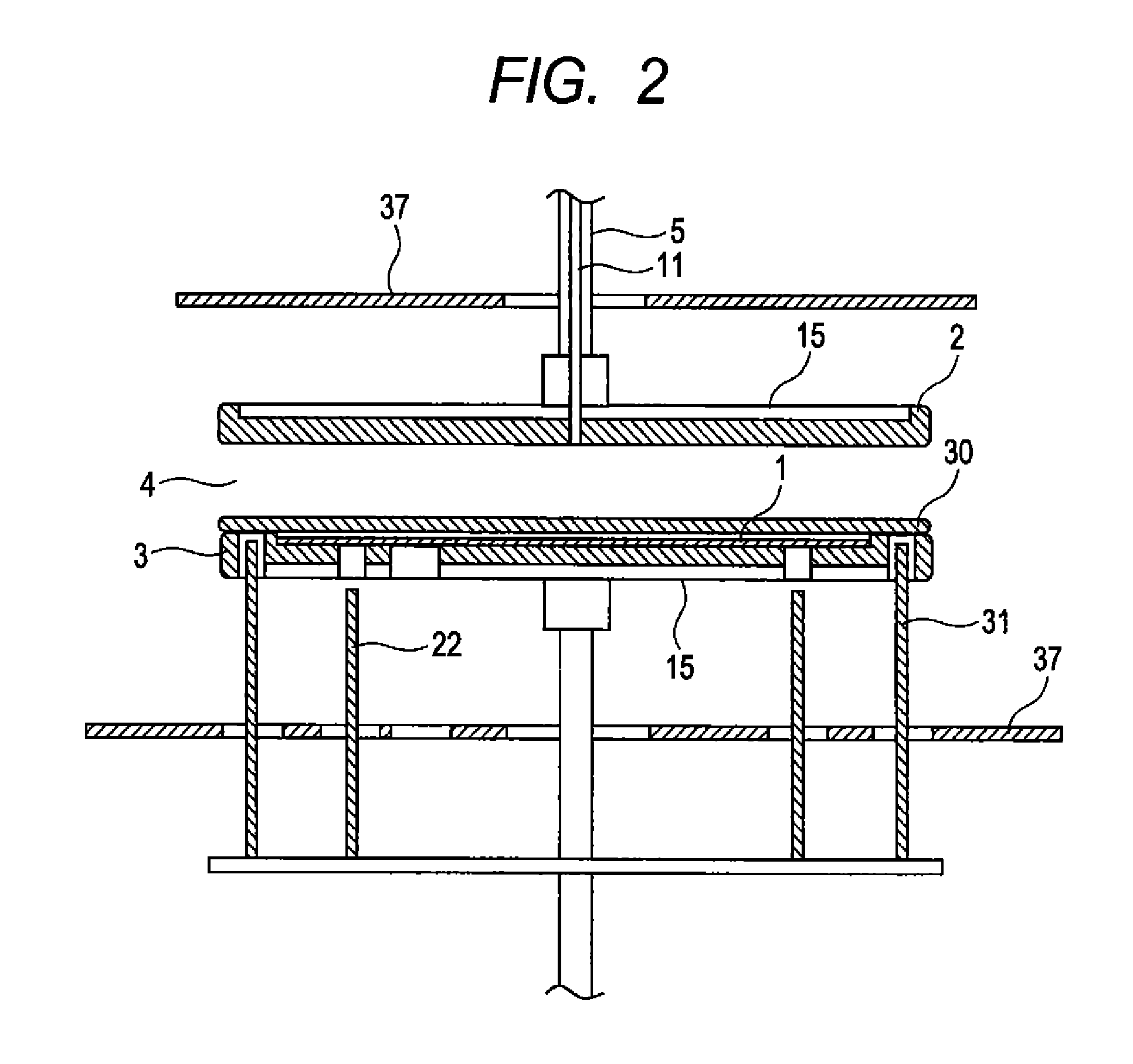Heat treatment apparatus
a technology of heat treatment apparatus and heat treatment chamber, which is applied in the direction of arc welding apparatus, chemical vapor deposition coating, drying machines, etc., can solve the problems of significant deterioration efficiency, extreme deterioration of energy efficiency required for heating, and high temperature resistance, and achieve low maintenance costs and high throughput. , the effect of high temperature resistan
- Summary
- Abstract
- Description
- Claims
- Application Information
AI Technical Summary
Benefits of technology
Problems solved by technology
Method used
Image
Examples
first embodiment
[First Embodiment]
[0028]A basic configuration of a heat treatment apparatus according to an embodiment of the present invention will be described with reference to FIG. 1. A heated sample 1 is installed on a first lower electrode 3 and a second lower electrode 30 is installed on the heated sample 1. Further, since the second lower electrode 30 contacts the first lower electrode 3 on the outer periphery thereof, the second lower electrode 30 does not contact the heated sample 1. In the embodiment, as the heated sample 1, a 4-inch (9100 mm) SiC is used. As an upper electrode 2 and the first lower electrode 3 have a diameter of 120 mm and a thickness of 5 mm. Meanwhile, the second lower electrode 30 has a diameter of 120 mm and a thickness of 1 mm. The thickness of the second lower electrode 30 may be determined considering rigidity and a heat capacity. The upper electrode 2, and the first lower electrode 3, and the second lower electrode 30 are used to deposit SiC onto the surface of ...
second embodiment
[Second Embodiment]
[0066]FIG. 6 shows a case in which the heated sample 1 is placed even in the upper electrode as well as the lower electrode. In order to install the heated sample 1 in the hollow upper electrode 33, the heated sample is placed on the wall of the hollow of the hollow upper electrode 33 at the side of the gap 4 where plasma is formed. In order to use the heated sample moving-up and down mechanism used in the lower electrode, a hole is formed at the gap 4 of the hollow upper electrode 33, such that the heating uniformity is deteriorated. Herein, a protrusion 34 is installed in the hollow of the hollow upper electrode 33, the heated sample 1 is placed above the protrusion 34 to form the gap between the inner wall of the hollow upper electrode 33 and the heated sample 1, and the heated sample 1 can be carried in and out by the transport arm. The heated sample 1 locally contacts the protrusion 34 of the upper electrode, but a heating mechanism is primarily performed by ...
PUM
| Property | Measurement | Unit |
|---|---|---|
| temperature | aaaaa | aaaaa |
| temperature | aaaaa | aaaaa |
| temperature | aaaaa | aaaaa |
Abstract
Description
Claims
Application Information
 Login to View More
Login to View More - R&D
- Intellectual Property
- Life Sciences
- Materials
- Tech Scout
- Unparalleled Data Quality
- Higher Quality Content
- 60% Fewer Hallucinations
Browse by: Latest US Patents, China's latest patents, Technical Efficacy Thesaurus, Application Domain, Technology Topic, Popular Technical Reports.
© 2025 PatSnap. All rights reserved.Legal|Privacy policy|Modern Slavery Act Transparency Statement|Sitemap|About US| Contact US: help@patsnap.com



